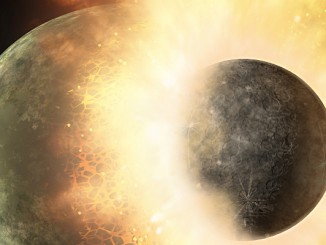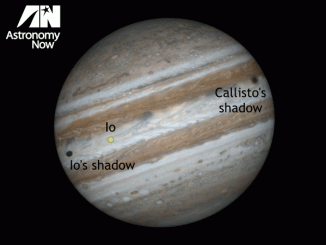
Despite being closest to Earth last month, the Solar System’s largest planet is still very much to the fore in March: Jupiter is big and bright in the constellation Cancer and currently highest in the sky to the south around 10:40 pm GMT for the centre of the British Isles.
Jupiter is presently the third brightest object in the night sky after the Moon and Venus (the latter being low to the west), but if any help is required to identify the King of the Planets then the Moon is just over 7° away to the right on Monday night, and a shade under 10° below Jupiter on Tuesday evening.
While gazing at this conjunction, try and comprehend the differing distance of these two worlds from us. On the night of March 2nd, the Moon will be 248,600 miles (400,100 kilometres) distant, while Jupiter will be 412.7 million miles (664.1 million kilometres) from Earth — a staggering 1660 times further away! Clear skies!
Inside the magazine
You can find out more about Jupiter in the March edition of Astronomy Now in addition to a full observing guide to the night sky.
Never miss an issue by subscribing to the UK’s biggest astronomy magazine. Also available for iPad/iPhone and Android devices.




